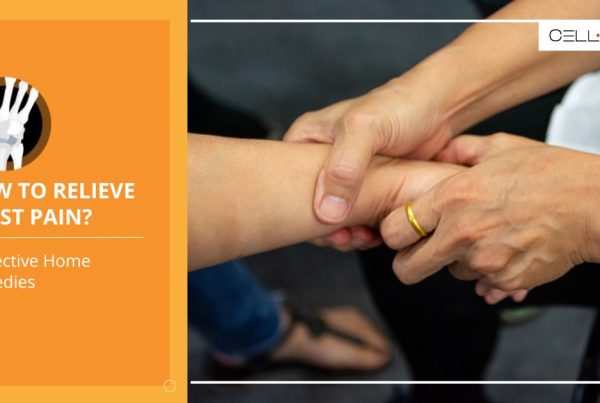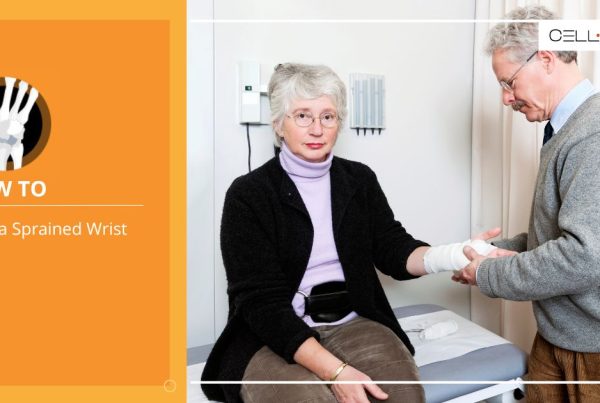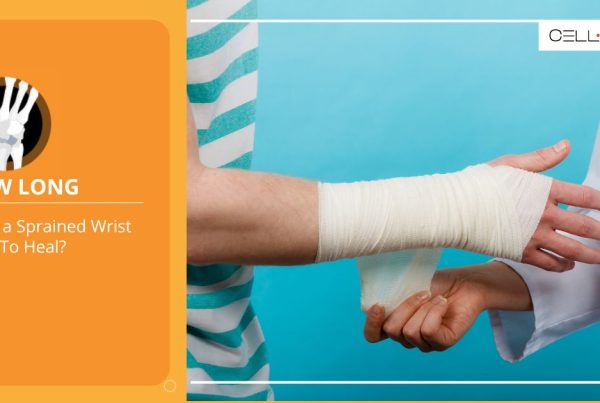Published on: October 29, 2024 | Updated on: January 18, 2025
The wrist is an important joint at the end of the forearm that performs many functions. From stabilization to flexion and extension, it provides a stable base for different hand movements.
Performing many routine daily tasks can cause joint pain, making it difficult to move or bend your wrist. Finding the answer to why my wrist hurts when I bend it or put pressure on it lies behind the causes.
According to a survey, work-related musculoskeletal disorders affect 42.9% of people, with wrist pain accounting for 13% of the total population. This makes wrist pain quite common.
If wrist pain affects your work, such as slow typing and other work-related issues, you should manage it timely.
Symptoms of Wrist Pain
Sometimes, the pain may feel sharp, achy, or dull. If your wrist hurts when you bend it or put pressure on it, recognizing a combination of symptoms can help you assess the pain.
Here are common symptoms.
- Dull aching pain
- Sharp jolting pain
- Wrist numbness
- Tingling sensation in the hands
- Swelling of the wrist
- Redness around the wrist
- Swollen fingers
- Warmth in the wrist joint
Why My Wrist Hurts When I Bend It or Put Pressure on It
Spending a lot of time typing on the keyboard or performing repetitive mouse movements can cause wrist pain.
Several other movements or underlying causes also apply pressure on the joint, causing wrist aches.
Here are some underlying causes that will help you understand why my wrist hurts when I bend or put pressure on it.
- Repetitive strain injury (RSI)
- Wrist sprains and strains
- Wrist fractures
- Dislocation
- Carpal Tunnel Syndrome
- Arthritis
- Acute injury
Repetitive Strain Injury (RSI)
The wrist is a joint that allows grasping and twisting, helping with various motor skills. Therefore, one of the leading causes of wrist pain is repetitive strain injury (RSI). You can develop RSI when you repeatedly use your wrist.
For example, hairdressers, gamers, and people who play instruments, use powerful tools, or work in production lines are more likely to develop repetitive strain injuries. Symptoms include wrist pain and tenderness.
You may experience a pulsating sensation in the wrist or a tingling sensation in your hand or arm. Loss of sensation and strength could accompany the condition.
Sprains and Strains
Wrist sprains and strains are common issues. A sprain is an injury to the ligament, while a strain is a muscle or tendon injury.
Wrist sprains and strains cause wrist pain when you bend your wrist or put pressure on it. Symptoms include swelling, discoloration, muscle spasms, difficulty moving the wrist, and pain and tenderness.
Wrist Fractures
A fracture means a break in your bone. Wrist fractures can occur with sprains and strains. When you bend your wrist forward to apply pressure on a broken bone, you might experience a sharp pain.
Symptoms include sudden severe pain, cracking or popping sound at the time of injury, swelling, tenderness, numbness, or wrist bruising.
If you have had an injury or any type of trauma to the wrist after which you’ve been experiencing pain, it’s best to get medical imaging such as an X-ray for a radiograph.
Dislocation
Although you’re very less likely to dislocate your wrist, it can still happen. Dislocation of a joint means the bone pushes out of its usual position.
The wrist, made up of eight small bones, can get dislocated. If any wrist bones push out of position, you will experience severe pain.
When you bend your wrist or put pressure on it, the pain would get worse. To be sure about a dislocated wrist, look for swelling and bruising before seeking medical attention.
Carpal Tunnel Syndrome (CTS)
Carpal tunnel syndrome (CTS) affects about 3-5% of adults in the US. It is a workplace injury, as people who perform repetitive wrist movements, such as typing on a keyboard for hours, are more likely to develop it.
Carpal tunnel syndrome results from the compression of the median nerve, which runs along the wrist. Nerve compression causes numbness, tingling, and wrist pain.
If you’ve been using the keyboard for hours, playing an instrument, or performing other repetitive wrist movements, you might wonder why my wrist hurts when I bend it or put pressure on it.
Arthritis
Arthritis, another underlying medical condition, can affect your wrist. Rheumatoid arthritis is an inflammatory autoimmune disease that causes joint damage.
Osteoarthritis results from wear and tear of the cartilage. This can cause wrist pain when the smooth cartilage at the end of the wrist bone wears away. The friction and inflammation cause wrist pain when you bend your wrist or put pressure on it.
How Can I Tell if My Wrist Is Sprained or Broken?
Constant wrist pain makes it vital to find out why it hurts when you bend it or put pressure on it.
As there are numerous underlying medical causes of wrist pain, it can be challenging to determine the exact cause.
First, you need to know whether your wrist is sprained or broken. While it is difficult to differentiate these two without medical intervention, looking out for some signs may help.
Obvious fracture signs include swelling around the wrist. If you notice that your wrist is starting to swell after an injury, get your X-ray done for a radiograph.
However, if you have constant dull, aching pain that only causes minor swelling, it could be a sprained wrist.
In case of a wrist sprain, your wrist would feel stiff, making it difficult to hold and grip objects. On the other hand, fractures present themselves with a deformity at the site of injury with numbness.
Wrap Up
You can treat minor wrist pain by taking over-the-counter pain relievers such as NSAIDs or steroid injections. These medicines reduce inflammation and ease discomfort, relieving wrist pain.
Your treatment options include physiotherapy, which focuses on strengthening your wrist. Some physiotherapy techniques, such as joint mobilization, relieve pain and help with wrist movements.
If the pain lasts for more than two weeks and you still can’t find an answer to why my wrist hurts when I bend it or put pressure on it, you should consult a doctor to diagnose underlying medical conditions.
Sources
Footnotes
- Chen N, Li G, Sun X, Zhang M, Zhang H, Ling R, Liu Y, Li G, Ren Z, Yin Y. Prevalence status and associated factors of wrist postural injury in the Chinese occupational population. Front Public Health. 2022 Nov 23;10
- Barr AE, Barbe MF, Clark BD. Work-related musculoskeletal disorders of the hand and wrist: epidemiology, pathophysiology, and sensorimotor changes. J Orthop Sports Phys Ther. 2004 Oct;34(10):610–627.
- Joshi A, Patel K, Mohamed A, Oak S, Zhang MH, Hsiung H, Zhang A, Patel UK. Carpal tunnel syndrome: pathophysiology and comprehensive guidelines for clinical evaluation and treatment. Cureus. 2022 Jul;14(7)
References
- Wrist Pain. Penn Medicine. Accessed 09/03/2024.
- 5 Causes of Wrist Pain. American Society for Surgery of the Hand. Accessed 09/03/2024.
- Repetitive Strain Injury. Cleveland Clinic. Accessed 09/03/2024.
- Wrist Sprain. NCBI Bookshelf. Accessed 09/03/2024.
- Wrist Fracture. NCBI Bookshelf. Accessed 09/03/2024.
- Joint Dislocation. ScienceDirect. Accessed 09/03/2024.
- Hand and wrist bones. Mayo Clinic. Accessed 09/03/2024.
- Rheumatoid Arthritis. National Institute of Arthritis and Musculoskeletal and Skin Diseases (NIAMS). Accessed 09/03/2024.
- Osteoarthritis of the Wrist. Boston Medical Center. Accessed 09/03/2024.
- Is My Wrist Broken or Sprained? HealthPartners. Accessed 09/03/2024.
- Topical NSAIDs Offer Joint Pain Relief. Arthritis Foundation. Accessed 09/03/2024.
CELLAXYS does not offer Stem Cell Therapy as a cure for any medical condition. No statements or treatments presented by Cellaxys have been evaluated or approved by the Food and Drug Administration (FDA). This site contains no medical advice. All statements and opinions are provided for educational and informational purposes only.
Dr Pejman Bady
Author
Dr. Pejman Bady began his career over 20 years ago in Family/Emergency Medicine, working in fast-paced emergency departments in Nevada and Kansas. He has served the people of Las Vegas as a physician for over two decades. Throughout this time, he has been met with much acclaim and is now the head of Emergency Medical Services in Nye County, Nevada. More about the doctor on this page.
Dr Pouya Mohajer
Contributor
Pouya Mohajer, M.D. is the Director of Spine and Interventional Medicine for CELLAXYS: Age, Regenerative, and Interventional Medicine Centers. He has over 20 years of experience in pain management, perioperative medicine, and anesthesiology. Dr. Mohajer founded and is the Medical Director of Southern Nevada Pain Specialists and PRIMMED Clinics. He has dedicated his career to surgical innovation and scientific advancement. More about the doctor on this page.









